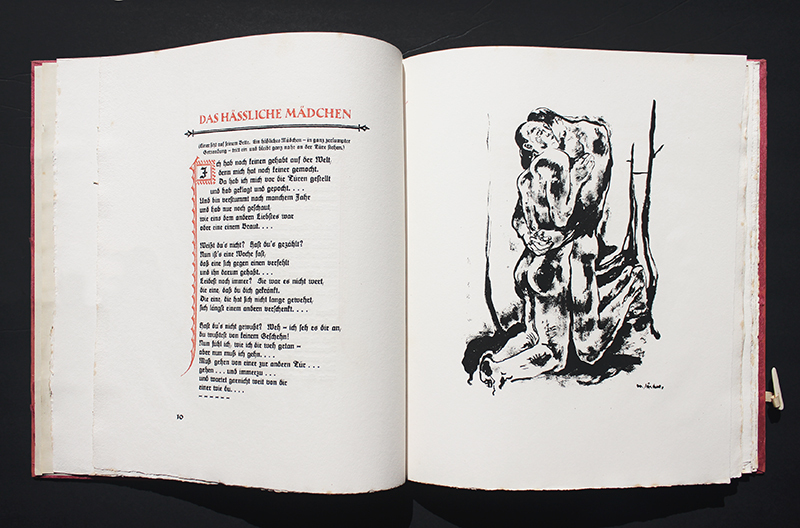
19th, 20th & 21st Century Fine Prints
707-546-7352 · fax 707-546-7924 · web: www.annexgalleries.com · email: artannex@aol.com
Der Venuswagen, Vol. VI - Heinrich Lautensack: Erotische Votiftafeln by Willi Jaeckel












Der Venuswagen, Vol. VI - Heinrich Lautensack: Erotische Votiftafeln
Willi Jaeckel
Title
Der Venuswagen, Vol. VI - Heinrich Lautensack: Erotische Votiftafeln
Artist
Willi Jaeckel
1888 - 1944 (biography)Year
1919
Technique
seven lithographs, typeset text
Image Size
book: 12 x 10-15/16 x 1/4"; images: various
Signature
ink signed by Jaeckel on the colophon
Edition Size
258 (of 740)
Annotations
typeset text throughout
Reference
Paper
antique-white laid
State
published
Publisher
Alfred Richard Meyer and Wolfgang Gurlitt at the Fritz Gurlitt Verlag, Berlin
Inventory ID
25060
Price
$400.00
Description
Loosely translating to "erotic votive tablets," the title references votive offerings, also known as votive deposits, which are religious or spiritual icons created in various media to thank a deity for an answered prayer or wish. Versions of these "votives" are found in nearly every religion, and are found in the form of carved stone, pressed tin, clay figures, small paintings, and more. Outside of Christianity, these were usually made without the intent of the icon's discovery, meant only for the eyes of the deity. In Christianity, especially Catholicism, the votive is often on display within a place of worship, particularly in the form of jeweled "crowns" and even entire churches.
In the case of this book, a compilation of poems by Heinrich Lautensack (German: 1881-1919) relating to sexuality, religion, and the human condition are the votives, accompanied by images drawn by Willi Jaeckel in his classic German Expressionist style. Unfortunately, it was published just months after Lautensack died in a mental hospital, having experienced a breakdown one year earlier upon the death of his mentor, the writer Frank Wedekind.
Lautensack had frequently worked with the Venuswagen publisher Alfred Meyer, including the publication of a bimonthly literary magazine, Die Bücherei Maiandros.












